
The numbers are staggering. The global large language model industry is projected to grow from $8.07 billion in 2025 to $84.25 billion by 2033, with a 34.07% compound annual growth rate. Why such explosive growth? Companies around the world are finding that language barriers must be overcome, not only because it's sweet to do so, but because it's business-necessary.
Think about it: your customers speak dozens of languages, your teams are situated on continents, and your competitors already use AI to talk without borders. If you're still employing traditional translation services or English-centric AI technologies, you're leaving money on the table.
Multilingual large language models (LLMs) are changing the game completely. They're not your typical translation software; they're sophisticated artificial intelligence systems that understand context, cultural allusions, and industry-specific jargon in more than one language simultaneously. They can power Tokyo customer support chatbots, produce marketing copy in São Paulo, and scan legal briefs in Frankfurt to the same precision and understanding.
But the problem lies here: with that many of them in the way, clogging up the market, how do you choose the best for your business?
We've done the legwork for you, comparing the top 10 multilingual LLMs on performance, language support, value for money, and real-world business applications.
Side-by-Side Comparison of Top Multilingual LLMs
Top 10 Multilingual LLMs for 2026
1. GPT-4o (OpenAI)
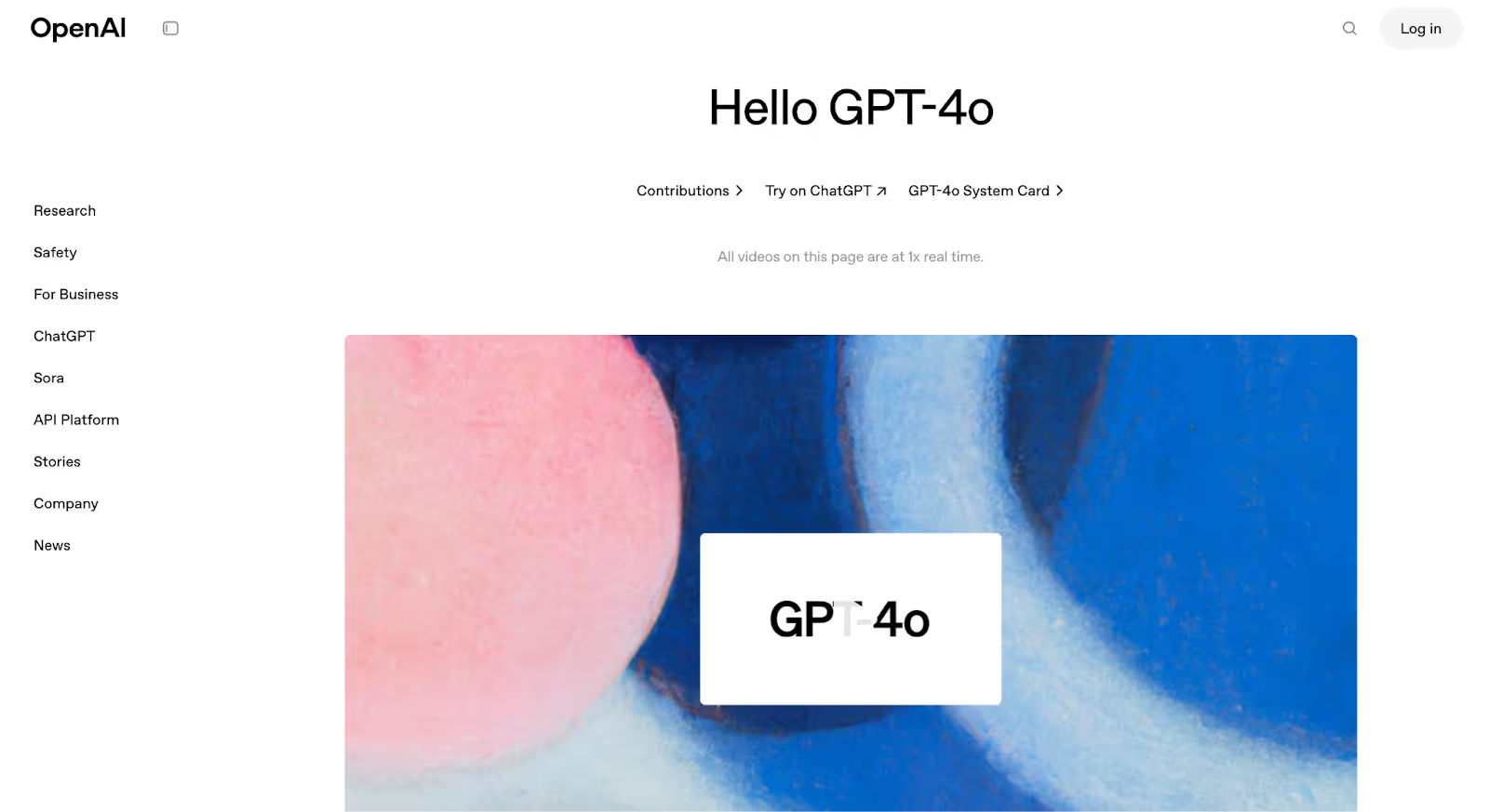
GPT-4o is the best multilingual LLM today when it comes to multimodal multilingual use cases. What sets it apart isn't how well it can understand or speak languages, it's the unconstrained integration of text, voice, and vision processing in real-time.
We at Azumo have incorporated GPT-4o into various real-time customer interactions and multilingual chat use cases. What impresses us most is its smooth multimodal input acceptance, which handles text, voice, and image in a single pass. It does, though, need to be orchestrated carefully to prevent token wastage, particularly in multi-turn conversations. For our use case, GPT-4o excels when combined with retrieval-augmented generation (RAG) and workflow orchestration libraries such as LangChain. It's perfect for front-line systems but overkill for light internal workloads.
Key Strengths:
- Native real-time processing of text, image, and audio
- Robust support for many languages with high accuracy for over 50languages
- Better performance for conversational AI applications
- Strong API ecosystem and developer tools
Best Use Cases:
- Voice and chat customer service automation
- Real-time video conference translation
- Multimodal content creation and analysis
- Educational interactive applications
Language Coverage
Outstanding performance across the largest world languages including English, Spanish, French, German, Chinese, Japanese, Arabic, and many more. Extremely strong in European and Asian languages.
Pricing
API-based pricing of $0.005 for 1K input tokens and $0.015 for 1K output tokens for GPT-4o.
Bottom Line
If you need the most up-to-date multimodal capabilities and are willing to pay for high-end prices, go with GPT-4o. It is best applied in customer-facing situations where you're handling voice, text, and image inputs at the same time.
2. Claude 3.5 Sonnet (Anthropic)
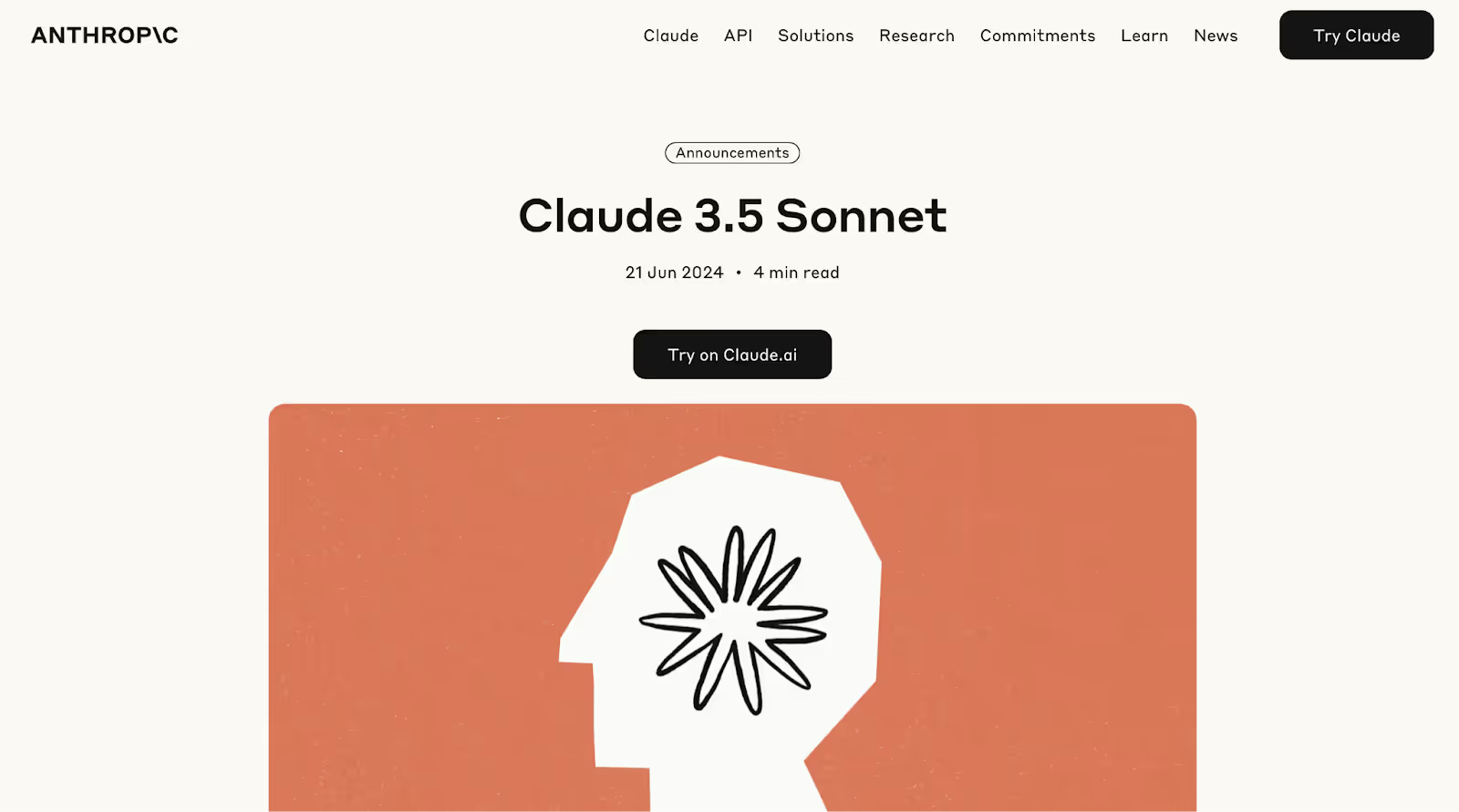
Claude is known as one of the best multilingual LLMs for understanding nuance and structure better than most competitors. For businesses dealing with complex, context-heavy content, that changes everything.
In our experience fine-tuning Claude 3.5 for enterprise workflows, its edge lies in its ability to preserve context over long documents, ideal for legal and financial clients. We’ve deployed it in compliance automation tools where tone, terminology, and section referencing matter, and Claude consistently delivers structured, on-brand results. One watch-out: if your use case involves high-throughput, Claude’s slightly slower generation speed may require smart queuing strategies.
Key Strengths:
- Superior context and nuance comprehension
- Strong safety features and content filtering
- Excellent performance in analytical applications
- Good quality output with decent formatting consistency
Best Use Cases:
- Legal document processing and analysis
- Academic research and content analysis
- Technical document translation
- Advanced business communication
Language Coverage
Strong performance in major world languages with particular strength in European languages and developing competence in Asian languages.
Pricing
Subscription model ranging from $20/month for Pro to enterprise pricing for teams, with API access available.
Bottom Line
Choose Claude when you need high-quality, nuanced text processing. It's particularly valuable for professional services, law, and academic use cases where accuracy and understanding of context are crucial.
3. Gemini 1.5 Pro (Google)

Google Gemini 1.5 Pro relies on the company's massive multilingual data sets and membership in Google's ecosystem. It was released in February 2024, according to TechRadar, and offers superior capabilities and performance compared to the original Gemini.
When we are working with enterprise clients heavily invested in Google stack (BigQuery, Docs, Drive) Gemini is a natural fit. We have had excellent outcomes integrating it with search-based apps or internal document summarization tools, especially in multilingual companies. Access and versioning can lag behind other leading models sometimes so we advise clients to compare based on integration and timeline needs.
Key Strengths:
- Seamless integration with Google Cloud services
- High speed of processing with relative performance
- High multilingual support based on the data of Google
- Most suitable for search and information retrieval operations
Best Use Cases:
- Productivity applications for business
- Search and information retrieval applications
- Business intelligence and data analysis
- Integrations with other Google Workspace applications
Language Coverage
Comprehensive support for global languages with particular strength in languages well-represented in Google's search data.
Pricing
Google Cloud pay-as-you-go pricing model with enterprise contracts as an option.
Bottom Line
Well suited for organizations already invested in the Google ecosystem. The integration benefits and competitive value position it as an excellent choice for productivity and data analysis applications.
4. LLaMA 3.3 (Meta)

Meta's new LLaMA release is the open-source multilingual AI best-of-breed. LLaMA 3.3 has enhanced reasoning, instruction following, and multi-language support powered by the breakthroughs of earlier LLaMA models.
LLaMA 3.3 is now our go-to option for customers who need private, self-hosted multilingual LLMs. We've used it to power in-house search agents and small translation applications where proprietary systems would have been overkill or too costly. Fine-tuning and hosting do require more engineering effort, but control in the long run, especially in regulated markets, is frequently well worth it.
Key Strengths:
- Open-source availability with commercial licensing
- Good reasoning and instruction-following capacity
- Live community development and support
- Affordable for large-scale deployments
Best Use Cases:
- Research and development activity
- Custom model training and tuning
- Affordable large-scale deployments
- Academic and research usage
Language Coverage
Great multilingual support for the core language groups with ongoing community improvements.
Pricing
Free for research and commercial use under Meta's license, with hosting and compute as the main cost.
Bottom Line
LLaMA 3.3 is most suitable multilingual LLM for organizations that need maximum flexibility and control over the deployment of their AI. The open-source nature allows for tailor-making and fine-tuning that is not possible with proprietary models.
5. Qwen 2.5 (Alibaba)

Qwen has slowly grown into one of the top multilingual LLMs, great for real-time use. CodingScape reports that Qwen2 often does better than most open models and can match up with paid models on tests for understanding, generating, and handling many languages.
We've tried out Qwen 2.5 in spots where time matters, like keeping track of goods and talking live in many languages. It has often been faster to reply than many Western rivals, mainly in Mandarin and Japanese uses. If your work spans across Asia or needs very quick answers in many languages, Qwen 2.5 brings one of the top deals in speed and worth we've seen.
Key Strengths:
- Exceptionally low latency for real-time applications
- Cost-effective pricing structure
- Excellent performance in Asian languages
- Strong performance in coding and mathematical reasoning
Best Use Cases:
- Real-time customer support and chatbots
- E-commerce applications and product recommendations
- Asian market-focused applications
- High-volume, speed-critical processing
Language Coverage
Excellent support for Asian languages (Chinese, Japanese, Korean, etc.) with strong global language capabilities.
Pricing
Competitive API pricing with volume discounts available.
Bottom Line
Qwen 2.5 is perfect for applications where speed and cost-effectiveness are priorities, especially if you're targeting Asian markets or need real-time processing capabilities.
6. DeepSeek V3 (DeepSeek)
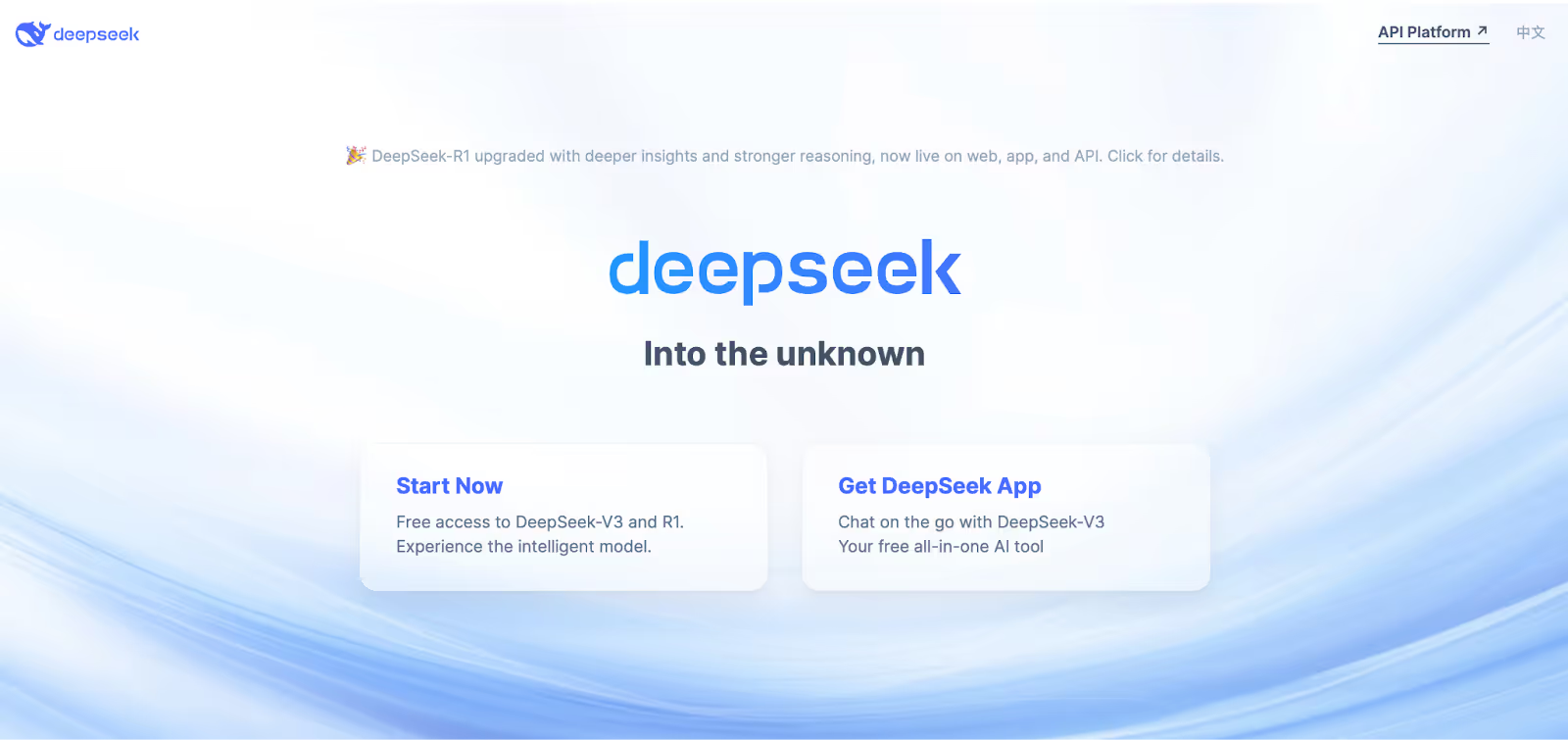
DeepSeek has emerged as the value-for-money alternative without losing out on quality. DeepSeek is reason- and RAG-efficient, making it attractive to price-sensitive users.
We’ve found DeepSeek V3 to be a great fit for projects where keeping inference costs low is key: think legal research tools or internal FAQ assistants. While it may not match GPT-4o or Claude in linguistic nuance, it’s impressively capable, consistent, and easy on the budget. If your priority is solid reasoning over showy output, DeepSeek gets the job done without breaking the bank.
Key Strengths:
- Extremely cost-effective pricing
- Good reasoning capability
- Ideal for RAG applications
- Acceptable performance-to-cost ratio
Best Use Cases:
- Knowledge management systems
- Document processing and analysis
- Research helper applications
- Budget-friendly tasks with reasoning
Language Coverage
Good multilingual support with a focus on reasoning tasks across languages.
Pricing
Affordable options with clear pricing.
Bottom Line
DeepSeek V3 is the smart option for firms that require good multilingual reasoning capabilities at a reasonable cost. It's particularly well-suited to knowledge work and document processing.
7. Command R+ (Cohere)
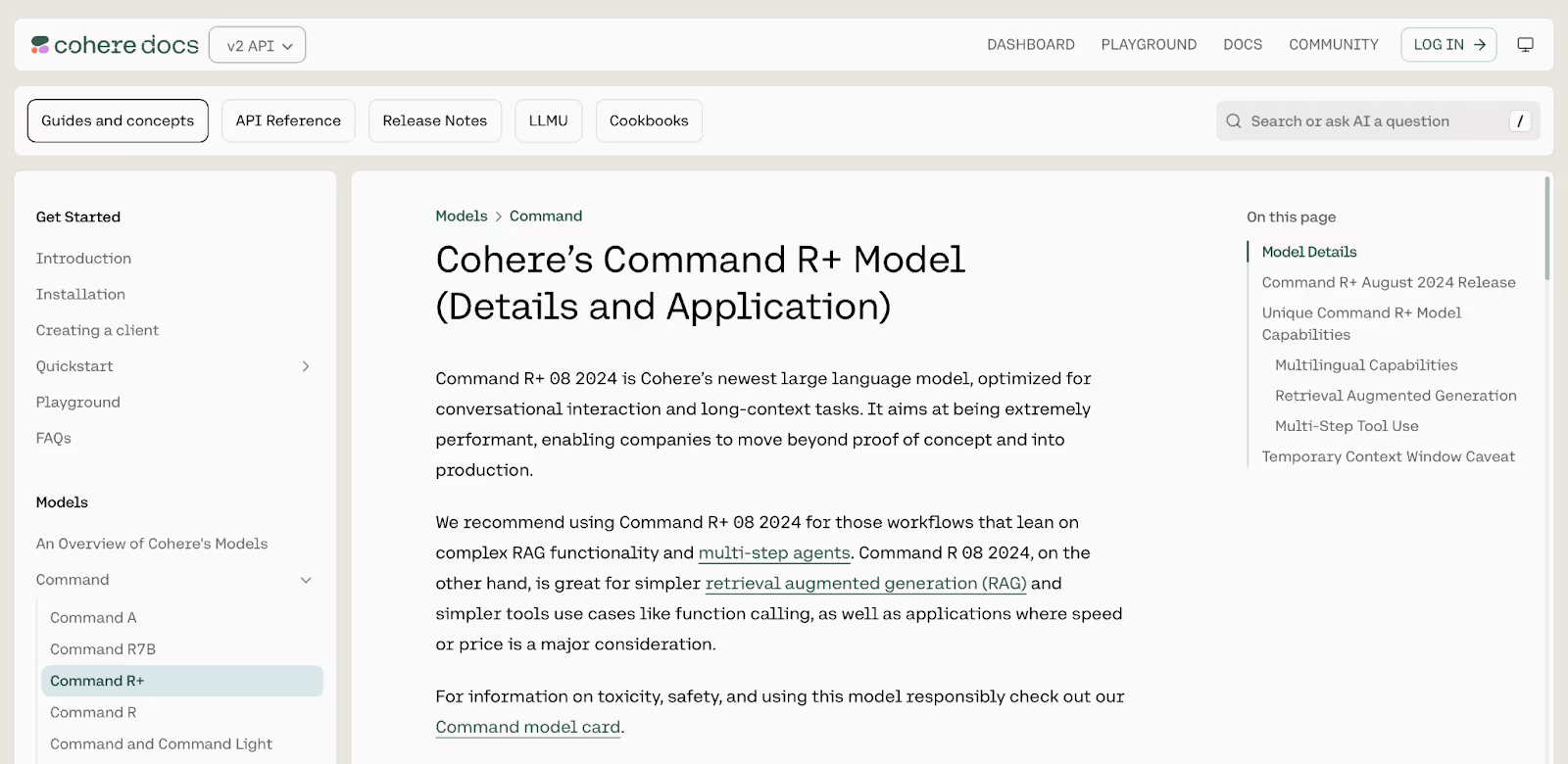
Cohere's Command R+ prioritizes business needs with rapid processing and business-focused features. FastBots designates Command R+ as one of the quickest available to choose from.
We've deployed Command R+ into high-speed settings: think call center records, claims handling, and compliance document queues. Its API response time is remarkable, and the output formatting is enterprise-polished out of the box. If you want an LLM that's more product-oriented than research-oriented, this one is for you.
Key Strengths:
- Optimized for business automation workloads
- High speeds of processing
- Enterprise-focused features and support
- Strong API and integration capabilities
Best Use Cases:
- Business process automation
- Document summary and extraction
- Business content generation
- Process optimization
Language Coverage
Business-focused multilingual support with emphasis on professional communication.
Pricing
Enterprise pricing model with custom contracts available.
Bottom Line
Command R+ is built for businesses that need reliable, fast multilingual processing for operational tasks. The enterprise focus makes it a solid choice for large organizations.
8. Mistral Large (Mistral AI)
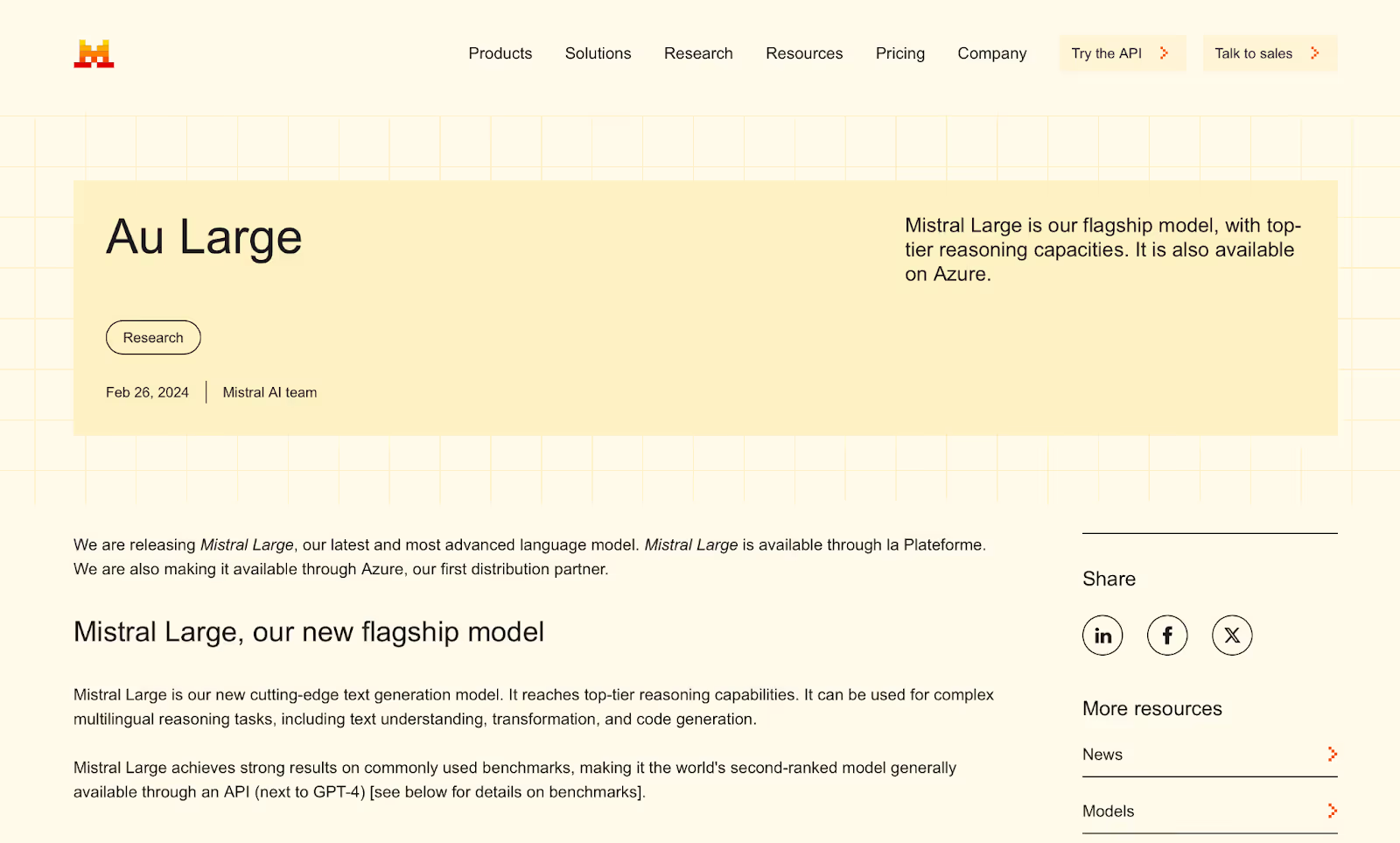
Mistral Large brings European data privacy compliance to the multilingual LLM space, which is increasingly important for global businesses operating under GDPR and similar regulations.
When our clients ask for GDPR-compliant LLM solutions, Mistral is always on the shortlist. We’ve used it in legal tech pilots where data can’t leave EU borders and audit trails matter. The model plays well with private infrastructure setups and has a clear performance edge in formal language use cases.
Key Strengths:
- European data privacy compliance
- Competitive performance across multilingual tasks
- Strong European language support
- Privacy-focused architecture
Best Use Cases:
- European market applications
- Privacy-sensitive use cases
- Regulated industry applications
- GDPR-compliant AI implementations
Language Coverage
Excellent European language support with growing global capabilities.
Pricing
Tiered pricing model with European hosting options.
Bottom Line
Mistral Large is the go-to choice for European organizations or any business that prioritizes data privacy and regulatory compliance in their AI implementations.
9. Claude Haiku (Anthropic)

Claude Haiku is Anthropic's speed-optimized model, designed for high-volume applications where quick response times are critical.
We’ve seen Claude Haiku shine in multilingual customer support systems where thousands of queries need real-time replies. While it’s not the deepest model for reasoning, it’s one of the most efficient options when your priority is “fast and safe at scale.” It also makes a great fallback model in multi-agent setups.
Key Strengths:
- Optimized for speed and efficiency
- Lower cost per token than full Claude models
- Maintains Anthropic's safety features
- Good for high-volume processing
Best Use Cases:
- High-volume customer service
- Real-time content moderation
- Speed-critical applications
- Cost-sensitive deployments
Language Coverage
Core multilingual capabilities optimized for speed.
Pricing
Lower cost per token compared to Claude 3.5 Sonnet.
Bottom Line
Claude Haiku is perfect when you need Anthropic's quality and safety features but require faster processing and lower costs for high-volume applications.
10. Phi-3 (Microsoft)
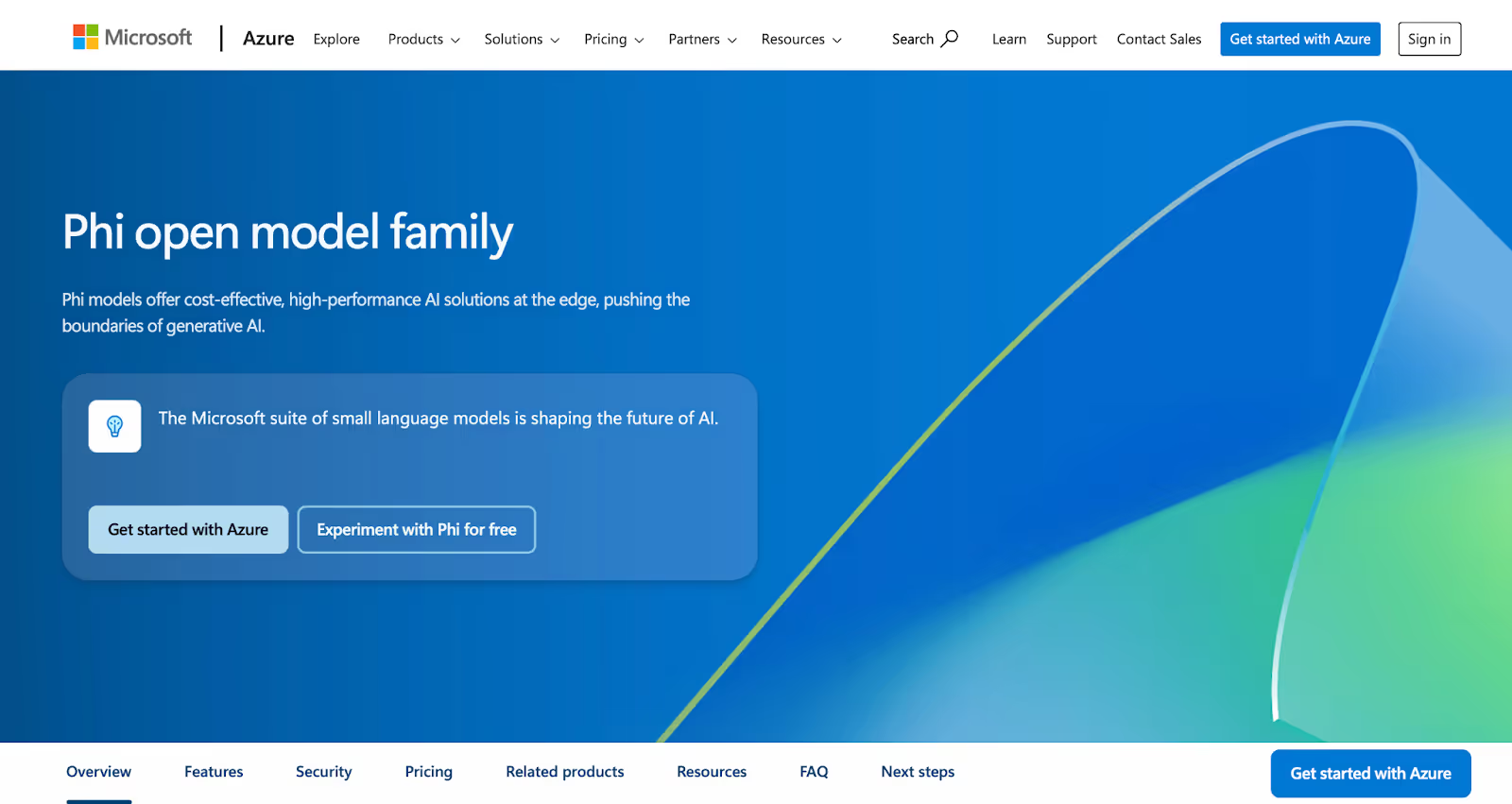
Microsoft's Phi-3 stands out for its small model size and ability to run on edge devices, making it unique in the multilingual LLM space.
We’re particularly excited about Phi-3 for its ability to bring intelligent, multilingual interactions directly onto devices. In one prototype, we used a similar architecture to build a compliance assistant that runs entirely within an edge network, and no data leaves the device. For industries like healthcare, defense, and manufacturing, this kind of deployment is a game-changer.
Key Strengths:
- Small model size suitable for edge deployment
- Integration with Azure ecosystem
- On-device processing capabilities
- Resource-efficient operation
Best Use Cases:
- Edge computing applications
- Mobile and IoT deployments
- Resource-constrained environments
- Offline multilingual processing
Language Coverage
Efficient multilingual processing optimized for smaller model size.
Pricing
Azure pricing model with edge deployment options.
Bottom Line
Phi-3 is ideal for applications where you need multilingual capabilities but can't rely on cloud connectivity or have strict resource constraints.
The Growing Demand for Multilingual LLMs in Global Business
The Asia Pacific region is leading the charge, expected to be the fastest-growing market for LLMs between 2024-2030. This makes perfect sense when you consider the linguistic diversity—countries like India have 22 official languages, while Indonesia has over 700 regional languages.
But it's not just about geography. Modern businesses need multilingual capabilities to scale operations across different regions. According to ClickUp's research, LLMs should have multilingual and multi-dialect capabilities to effectively scale business operations in different geographical locations.
The business applications are endless. Pixelplex notes that LLM applications can provide accurate, context-aware translations across numerous language pairs, trained on vast collections of bilingual or multilingual text to understand nuances, idioms, and grammatical structures.
Consider these real-world scenarios:
- A global e-commerce platform needs to provide customer support in 15 languages simultaneously
- A multinational corporation wants to analyze social media sentiment across different markets
- A healthcare company needs to process patient data and medical records in multiple languages
- A financial services firm requires compliance documentation in various regulatory languages
The ROI is compelling too. By 2025, it's estimated that 750 million apps will be using LLMs, with 50% of digital work automated through these language models. Companies that get ahead of this curve will have a significant competitive advantage.
How We Evaluated the Best Multilingual LLMs
Choosing the right multilingual LLM isn't just about picking the most popular option. We developed a comprehensive evaluation framework based on what actually matters for business applications:
Language Coverage and Accuracy
We looked at how many languages each model supports and, more importantly, how well it performs in each language. Some models claim to support 100+ languages but only work well in English and a few major European languages.
Performance Benchmarks
Speed matters when you're processing thousands of customer inquiries or generating content at scale. We evaluated output speed (tokens per second), latency (time to first token), and context window size. The Artificial Analysis leaderboard provides excellent benchmarking data across over 100 AI models.
Cost-Effectiveness
Budget constraints are real. We analyzed different pricing models—from pay-per-token APIs to subscription services—and calculated the total cost of ownership for different use cases.
Multimodal Capabilities
Modern applications need more than just text. The ability to process images, audio, and video alongside text is becoming standard. According to DataGuy's analysis, GPT-4o leads in multimodal fluidity and response latency, being the only model that processes text, image, and audio natively in real-time.
Enterprise Integration
How easily can you integrate the model into your existing systems? We considered API availability, documentation quality, and support for different programming languages and frameworks.
Open Source vs. Proprietary
This choice has real trade-offs. Open-source models give you a lot of control and room to customize, but they do demand more technical know-how to set up and maintain. On the flip side, proprietary models are easier to work with out of the box and come with support, but you're limited in how much you can tweak them. It really depends on your team’s capabilities and how much flexibility you need.
How to Select and Deploy the Correct Multilingual LLM
Selecting the best multilingual LLM is not just selecting the highest-performing model. You need to match the technology with your specific business requirements and constraints.
Start with Your Use Case.
Are you building a customer support chatbot, creating marketing text, or analyzing business reports? Each model performs best on a different task. GPT-4o can't be topped when it comes to multimodal customer interactions, while Claude 3.5 Sonnet is best for in-depth document analysis.
Assess Your Language Requirements.
Don't just count languages—evaluate quality. If you're primarily serving European markets, Mistral Large might be perfect. For Asian markets, Qwen 2.5's superior performance in Chinese, Japanese, and Korean could be decisive.
Consider Your Technical Infrastructure
you need cloud-based APIs or on-premise deployment? Can your team handle open-source model management, or do you need full vendor support? LLaMA 3.3 offers maximum flexibility but requires more technical expertise than plug-and-play options like GPT-4o.
Final Thoughts: Ready to Make Multilingual AI Work for You?
As multilingual LLMs become essential for operating at global scale, the challenge is no longer just choosing a model, it’s knowing how to adapt it to your business.
The models we’ve covered here, from GPT-4o and Claude 3.5 to Qwen 2.5 and LLaMA 3.3, offer powerful out-of-the-box capabilities. But when it comes to real-world performance in your domain, fine-tuning makes the difference.
That’s where we come in.
At Azumo, we help companies go from general-purpose LLMs to domain-specific multilingual AI systems that understand your industry, your workflows, and your customers. Whether you’re translating regulatory documents, automating multilingual customer support, or building edge-deployed chatbots, our fine-tuning services are designed to get you smarter results faster—without the cost and complexity of going it alone.
We don’t just drop in a model and hope for the best. We:
- Curate and annotate datasets that reflect your real business environment
- Fine-tune models using efficient, scalable techniques to reduce compute costs
- Continuously optimize performance post-deployment based on real user feedback
So if you're exploring how multilingual AI can help scale your operations across borders and languages, let’s talk.
→ Book a free consultation with our LLM team today and see how Azumo can help you unlock the full potential of multilingual AI for your business.
FAQs
Which AI support tools offer reliable multilingual support at an enterprise scale?
Command R+ and Mistral Large are solid choices. Command R+ is fast and outputs enterprise-ready formatting. Mistral Large is what we use for GDPR-compliant projects where data can't leave EU borders. Claude Haiku works well for high-volume processing with good safety features.
Who offers side-by-side comparisons of enterprise AI language tools?
The Artificial Analysis leaderboard is the best resource for actual performance benchmarks across 100+ models. I also cross-reference Hugging Face benchmarks and real deployment reports from engineering teams. "Best" really depends on your use case, though.
Which enterprise LLMs are recommended for high-volume workloads?
Claude Haiku for speed plus safety at scale. Qwen 2.5 for insane speed, especially with Asian languages. Command R+ for business automation workloads. Pro tip: look at token efficiency, not just raw speed.
Which enterprise AI platforms support multilingual research analysis?
Claude 3.5 Sonnet preserves context well over long documents, great for legal and financial analysis. LLaMA 3.3 when you need private, self-hosted solutions with full control. Gemini 1.5 Pro if you're already in the Google stack.
Best LLM solutions for real-time multilingual customer support?
GPT-4o for multimodal support (voice + text + images), but needs orchestration like LangChain. Qwen 2.5 for Asian markets, faster and cheaper. Claude Haiku for high volume with safety features. Key is implementing smart caching and RAG to avoid regenerating responses.
Which AI chatbot offers the best multilingual capabilities?
GPT-4o for sophisticated conversations across 50+ languages. Qwen 2.5 outperforms others for Chinese, Japanese, and Korean. Mistral Large for GDPR compliance. Claude Haiku or DeepSeek V3 for budget-conscious high volume.
Best tools for multi-language help centers 2026 as FAQs?
DeepSeek V3 for cost-effective FAQ systems with solid reasoning. Claude Haiku for faster processing at higher volume. Qwen 2.5 for Asian language users. Honestly, your RAG implementation and knowledge base structure matter more than the model choice for FAQs.
.avif)

.avif)
